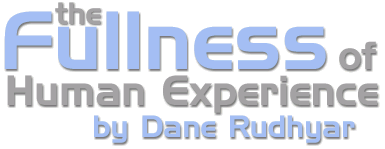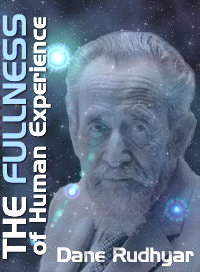 |
| Home | Bio | Art | Music | Literature | Civilization & Culture | Philosophy of Wholeness | Theosophy & Spirituality | Astrology |

CHAPTER SEVEN
A New Frame of Reference: The Earth-being & the Function of Humanity within It - 5 The planetary spheres When a geologist speaks of the size or the age of the earth, he has in mind a globe of material substances which he assumes to exist in several continuous states from the surface regions of the biosphere to a central core. This core is geometrically and thus abstractly definable, but whatever reality it possesses does not belong to the field of human experience and human knowledge. The two-dimensional cross-section of the earth-globe depicted in typical earth-science books reveals a circle whose radius is about 6,370 kilometers. The solid surface region — like the shell of an egg — is very thin. Directly or indirectly we know very little of what takes place a few kilometers beneath the soil we walk on. Below this dense shell of soil and rocky substances a larger region (often called magma) may extend to a depth of some 2,000 kilometers, leading to a core estimated to have a radius of 3,000 kilometers. While the density of the various regions of the globe is apparently known, the determination of the levels of heat and perhaps even pressure to which the materials of the globe are subjected are almost entirely speculative. It has been assumed that the core of the earth-body is made of nickel and iron, but this is very controversial. Actually we have no reliable, direct knowledge of what is at the center of the globe. We have in fact no knowledge of what is at the core of any planet or star. All human knowledge is surface knowledge — knowledge referring to changes taking place at the surface of planets and stars. As material inhabitants of the biosphere, human beings are surface beings. Whatever refers to the centrality of being is unknown. Scientists assume that there is matter at the center of the globe, but they can only speculate on the state of that matter. Yet at the center, there may be "nothing" understandable and still less describable in human terms. A state of perfect equilibrium may be imagined, but beyond what human beings can experience as materiality in terms of the experience of an Earth-being, it may nevertheless be matter. It may be a condition of being in which opposite gravitational pressures neutralize one another — a condition to which Indian seers or metaphysicians may refer when speaking of a laya center. It would be easy to think of the core of the earth-globe as the "heart-center" of the planetary Being, but in Kundalini yoga the chakras (or energy-centers) are not to be found at the level of materiality of biological processes and organs. These only reflect or resonate to corresponding "etheric" whorls of energy. The use of such correspondences, even if intellectually sound, can confuse far more than enlighten. To speak of the Earth-being as a living organism is indeed confusing, because in the total field of experience of such a being, the biosphere — and all that solely refers to "life" — is only one among several levels of activity and consciousness. The biosphere is the place, on both sides of the surface soil of the globe, where the specific features of the biological conditions of existence can develop to their full extent. The lithosphere (rocks and minerals) and the hot magma of the next deeper region of the earth's crust — plus the atmosphere, stratosphere, and ionosphere surrounding the dense and light-obscuring materials of the earth's surface — are all necessary factors in the development of human persons. Personhood adds a new dimension to the field of activity of the Earth-being, but one should not think of the Earth-being either as only a living organism planetary in scope, or only as a person. Whether as an experienceable concrete reality or as an abstract frame of reference for all human situations, the Earth-being encompasses several levels of activity and consciousness. The first of these is the level of materiality. At that level, the Earth-being is a dense and massive globe made of a multitude of molecules that are complex and integrated factories in which a relatively few atomic elements are continually at work, releasing energy. The next level of being is what is usually meant by "life." A life-field (biosphere) develops at the surface of the material globe because biological processes apparently require for their optimum actualization the interaction of the internal matter of the earth's globe and the many external radiations whose frequencies cover a vast spectrum, from ultrasonic radio and heat waves to light, x-rays, and beyond. The boundaries of a field separate that field from its environment, yet they are also the place where inside and outside can meet and interact. Life, as the principle of biological organization using molecular matter as a foundation, is presumably the result of the kind of interactions which have occurred and are still occurring at the surface of the earth-mass. While this surface region (the biosphere) is an extremely thin layer of activity, its importance in the total constitution of the Earth-being cannot be measured and evaluated in such spatial terms. This importance acquires its essential meaning only when seen in the perspective of the cyclo-circular structure of the Movement of Wholeness, and in terms of the Godhead's purpose for creating a new universe. As already stated, in order to be fully actualized, such a purpose requires the eventual development of human situations allowing the many patterns of ancient karma to become "neutralized," or rather re-absorbed into the rhythms of Wholeness from which a very large number of the components of the humanity of a long-past universe had estranged themselves. Such a karma-dissolving process cannot be accomplished at the strictly biological level, where instinctual reactions preclude any possibility of freedom of choice. The process requires the operation of the principle of personhood; first within the collective frame of reference of a culture, then in individualized modes of thinking-feeling and behavior. Personhood, however, demands for its concrete actualization a material foundation, as well as the use and at least partial control of biological processes and their derivatives at the level of the collective psychism of a culture. A person unable to resist powerful biological impulses and their translated forms at the sociocultural level (egocentricity, ambition, lust, and greed for material possessions) generates forces and psychic-emotional by-products which fill the realm of the Earth-being to which I have given the name of psychosphere. Such a realm may be considered the lower level of the noosphere; but the different basic meanings of the two Greek words, psyche and nous (often believed to be nearly synonymous) should be clearly understood. By permission of Leyla Rudhyar Hill Copyright © 1986 by Leyla Rudhyar Hill All Rights Reserved.  Web design and all data, text and graphics appearing on this site are protected by US and International Copyright and are not to be reproduced, distributed, circulated, offered for sale, or given away, in any form, by any means, electronic or conventional. See Notices for full copyright statement and conditions of use. Web design copyright © 2000-2004 by Michael R. Meyer. All Rights Reserved. |
 |
